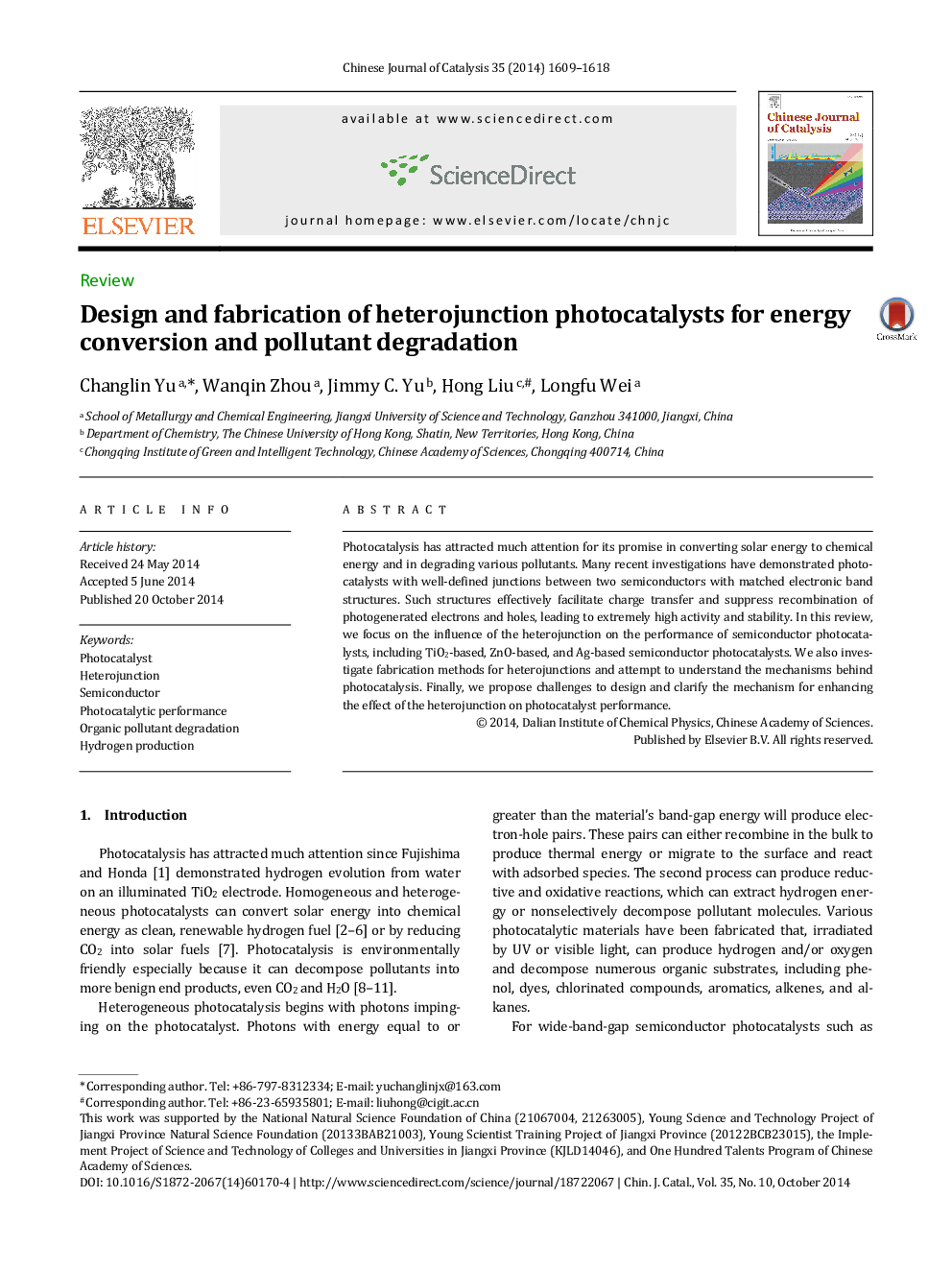| کد مقاله | کد نشریه | سال انتشار | مقاله انگلیسی | نسخه تمام متن |
|---|---|---|---|---|
| 59116 | 1419438 | 2014 | 10 صفحه PDF | دانلود رایگان |

Photocatalysis has attracted much attention for its promise in converting solar energy to chemical energy and in degrading various pollutants. Many recent investigations have demonstrated photocatalysts with well-defined junctions between two semiconductors with matched electronic band structures. Such structures effectively facilitate charge transfer and suppress recombination of photogenerated electrons and holes, leading to extremely high activity and stability. In this review, we focus on the influence of the heterojunction on the performance of semiconductor photocatalysts, including TiO2-based, ZnO-based, and Ag-based semiconductor photocatalysts. We also investigate fabrication methods for heterojunctions and attempt to understand the mechanisms behind photocatalysis. Finally, we propose challenges to design and clarify the mechanism for enhancing the effect of the heterojunction on photocatalyst performance.
Graphical AbstractForming well-defined junctions between two semiconductors with matching electronic band structures improves charge transfer and suppresses recombination of photogenerated electrons and holes, leading to extremely high activity and stability.Figure optionsDownload as PowerPoint slide
Journal: Chinese Journal of Catalysis - Volume 35, Issue 10, October 2014, Pages 1609–1618